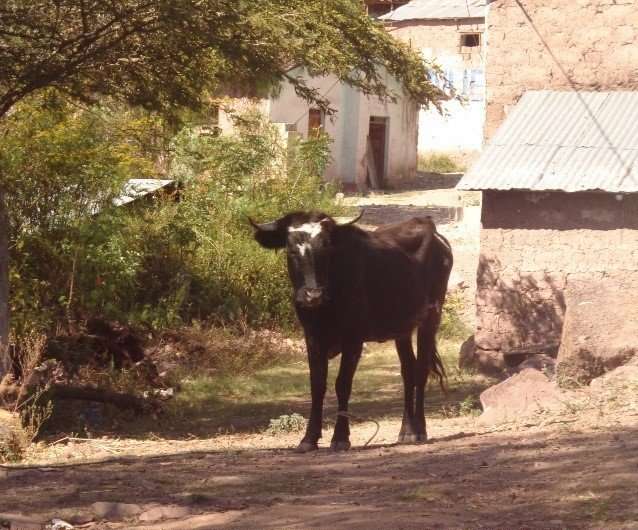Vampire bat rabies kills hundreds of cattle a year in Peru

The vampire bat is known to be the principle reservoir of rabies throughout Latin America, yet the burden of vampire bat-transmitted rabies on human lives and livestock has been largely anecdotal. Now, researchers have calculated that, in Peru, more than 500 cattle a year die of rabies. The new study, which also detailed risk factors, appears in PLOS Neglected Tropical Diseases.
Rabies is among the most important zoonoses for human and animal health in Latin America. The common vampire bat (Desmodus rotundus) is the principle reservoir, and the main prevention methods are culling of bats and vaccination of humans and livestock. In Peru, recent geographic expansion of vampire bat rabies (VBR) has raised public health concerns, but the true incidence of VBR and the rate of under-reporting of cases is unknown.
In the new work, Julio Benavides, of the University of Glasgow, Scotland, and colleagues focused on a region in the southern Peruvian Andes where VBR remains poorly controlled. They studied questionnaires on livestock health and VBR knowledge completed by farmers in 40 communities, as well as passive national surveillance data on 11 years of VBR outbreaks.
Their models calculated that there are 4.6 VBR cases per reported case, leading to between 505 and 724 cattle deaths in 2014 in the study area and costing US$121,797- US$171,992. Together, animal mortality costs combined with vaccination costs totaled more than US$300,000 per year, representing a major loss for impoverished farming communities that rely on livestock for subsistence. The study also showed that the perceived risk of rabies in an area greatly affected both reporting of cattle mortality and vaccination coverage, suggesting that campaigns to increase awareness could reduce the VBR burden. Moreover, the model found that enhancing vaccination programs could diminish the financial losses attributed to VBR, and that distance to reporting office is a major obstacle to report sick animals by farmers.
"This estimate, at least four times higher than official reports, is essential in planning and implementing cost-effective measures to prevent and control the disease, which mainly affects low-income, small-scale farmers," the researchers say. "Our results further suggest that increasing the risk perception of communities that are far from reporting offices could both increase reporting and reduce cattle losses by encouraging preventative vaccination in high risk areas."
More information: Benavides JA, Rojas Paniagua E, Hampson K, Valderrama W, Streicker DG (2017) Quantifying the burden of vampire bat rabies in Peruvian livestock. PLoS Negl Trop Dis 11(12): e0006105. doi.org/10.1371/journal.pntd.0006105

















